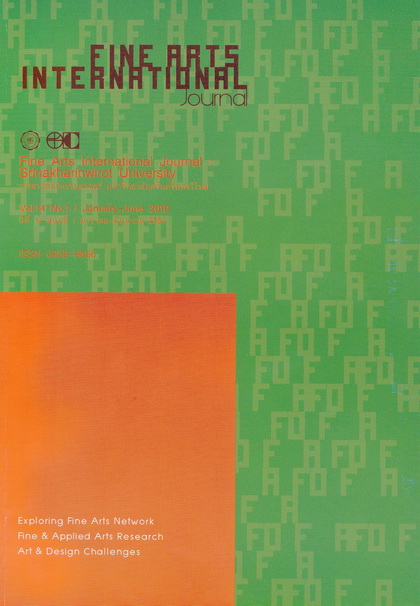Local Identity in Food Packaging Design Case Study : Samut Songkhram Province
Keywords:
Local identity, Food packaging design, Community enterpriseAbstract
“Small and Micro Community Enterprise” (SMCE) has been the major factor to drive the economy of Thai communities. Nowadays, Thai SMCE lacks valid and appropriate directions, by focusing mainly on business procedures in order to struggle in the competitive free-capitalism export market as to the globalization stream. Thus, the directions of packaging design of Thai community products have now been influenced by international conditions. The identity and uniqueness, therefore, are inevitably swept away by the globalized society. The aims of this research are 1) to study the way of geometric art composition on packaging in order to create the image and reflect both characteristics and origins of community food products in Samut Songkhram province and 2) to seek for the way to apply the identity of the community onto the food products’ packaging, which is used for retail trade, transportation, and sale promotion, making it usable and cost-effective.
Researching process to create a local identity for food packaging design in Thailand started from valid and appropriate directions, by defining “SMCE” with a new paradigm aiming to create an integrated balanced system for the strength and the sustainability of communities. This study divides the economic advantage factors of communities into three categories, including 1) non-monetary capital, 2)knowledge, and 3) community marketing. The Sufficiency Economy philosophy is used as the framework in this study, and a guideline for applying the philosophy to the community products for highest productivity.
A study shows that the local food products can be coded by that 3 variables factors, separating the smaller group of the local food products into 6 criteria, which are 1) Types of raw materials 2) Opportunities to replace the raw materials 3) Processing 4) Familiarity of products 5) Reputation of brands and 6) Product’s life cycle, which divide the local food products to the total of 64 codes to be used as the basis of design guidelines to make it suitable for the available market within the market in and outside the community as well as the export markets. This research will not include necessary food consumed in everyday life.
The guidelines of local identity design principle for food packaging are analyzed through a table matrix from the variable factors of community economic advantages with 4 basic marketing functions of packaging 1) Communications and identification 2) Reflection of brand image 3) Accessibility to target market and 4) Sale promotion, which can make the total of 32 principles for local food packaging design, which can make use of the design analysis to create a layout of questionnaire for finding the real need of target group by 8 principles and 32 groups of local food product suitable for distribution in a particular season, and 2 groups of local product have a good opportunity to be sold in a market outside community or export market, then the design principles that define the guidelines to be applied for all types of local food product in community.






